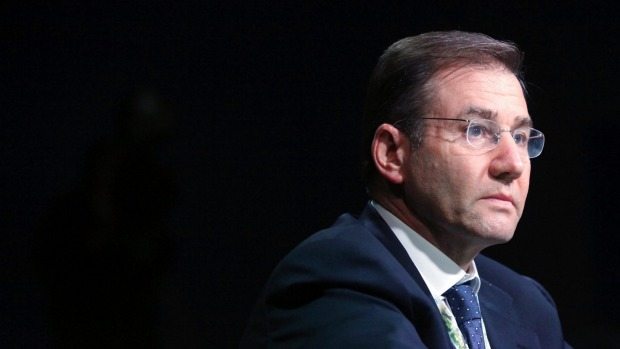
IT’S probably just coincidence and most likely doesn’t stand for very much, but I thought it’s interesting Glencore’s board consists largely of accountants. There are two ‘miners’: a mining engineer in Peter Coates, a non-executive director, and Tony Hayward, the non-executive chairman who is actually a trained geologist.
More importantly, the CEO – Ivan Glasenberg – is a trader. That’s where he earned his stripes in the organisation which he joined in 1984. Steve Kalmin, the CFO with an uncanny and extensive ability for numerical recall, has a bachelors degree in business. Does this perhaps explain the group’s antipathy for building mines?
Mining engineers in the executive class normally have a deep association with the process of mine building. It’s what they do, and they got to their position by having a vision for mineral production. You can’t say that’s something Glasenberg holds dear. “This company doesn’t trust greenfields [projects],” said Glasenberg at the group’s interim results. “They don’t hit budget or time and the industry has a poor track record in implementing them so we will resist greenfields for as long as possible,” he added.
As a trader, Glasenberg is only ultimately interested in the price the group can get for its product. As long as the mines run well, competitively, not even political worries overly trouble him. He did say at one point this week that should political strife erupt in the Democratic Republic of Congo (DRC), it would be positive for copper and cobalt prices. He hastily added that’s not his wish … but you get the point.
That’s why investors can expect Glencore to continue to seek out merger and acquisition. “It gives us certainty,” he said. “The only risk is getting your forward pricing right [on the minerals the target produces] and the internal rate of return. History proves that whatever you do [with respect to greenfields projects] you never get it right.”
Merger and acquisition activity plays right into Glencore’s trading skills set because of its advantage at the grassroots level of buying, selling, and arbitraging minerals globally. It was a point Glasenberg was willing to acknowledge. “We sit back and see opportunities better than others because we deal with third party trading and suppliers,” he said. “We see an opportunity before others and deal faster and get quicker to the asset.”
That’s one of the virtues of the trading division. The other is that it has a degree of counter-cyclicality. In the down-cycle, the trading division doesn’t do as well as in the up-cycle, but then it doesn’t do badly.
What then are the chances for further acquisition activity? According to Glasenberg, Kalmin has capped his ambitions by setting a net debt target of no more than $16.5bn versus $13.5bn at the close of the half-year on June 30. Kalmin no doubt has his eye on demand for further and improved payouts. In fact, there was some disappointment Glencore didn’t do better on the $500m interim dividend announced.
At current spot prices, Glencore will achieve free cash flow of more than $7.1bn and pretax earnings of $15bn. “Based on these run rates, Glencore would be at the bottom of its targeted net debt range in six months,” said Christopher LaFemina, an analyst at Jefferies.
Glencore’s formulaic dividend payout would be, therefore, $2.5bn – equal to a 4% yield. However, as net debt is lowered, the payout ratio should materially increase, said LaFemina. Given that Glencore is also leveraged to rosy-looking commodities such as copper, nickel and cobalt, pretax earnings could increase to $16.5bn and free cash flow increase to $10.1bn, a yield of 16% lay 2020.
“We didn’t want to muddle ourselves up,” said Kalmin of the decision to stick to the firm’s previous dividend guidance. “There are not too many sleeps between now and February, so people can wait,” said Kalmin. Set against a commodity market Glasenberg described as the best in six years, it’s possible investors can expect the group to be active in both realms of return and acquisition.











